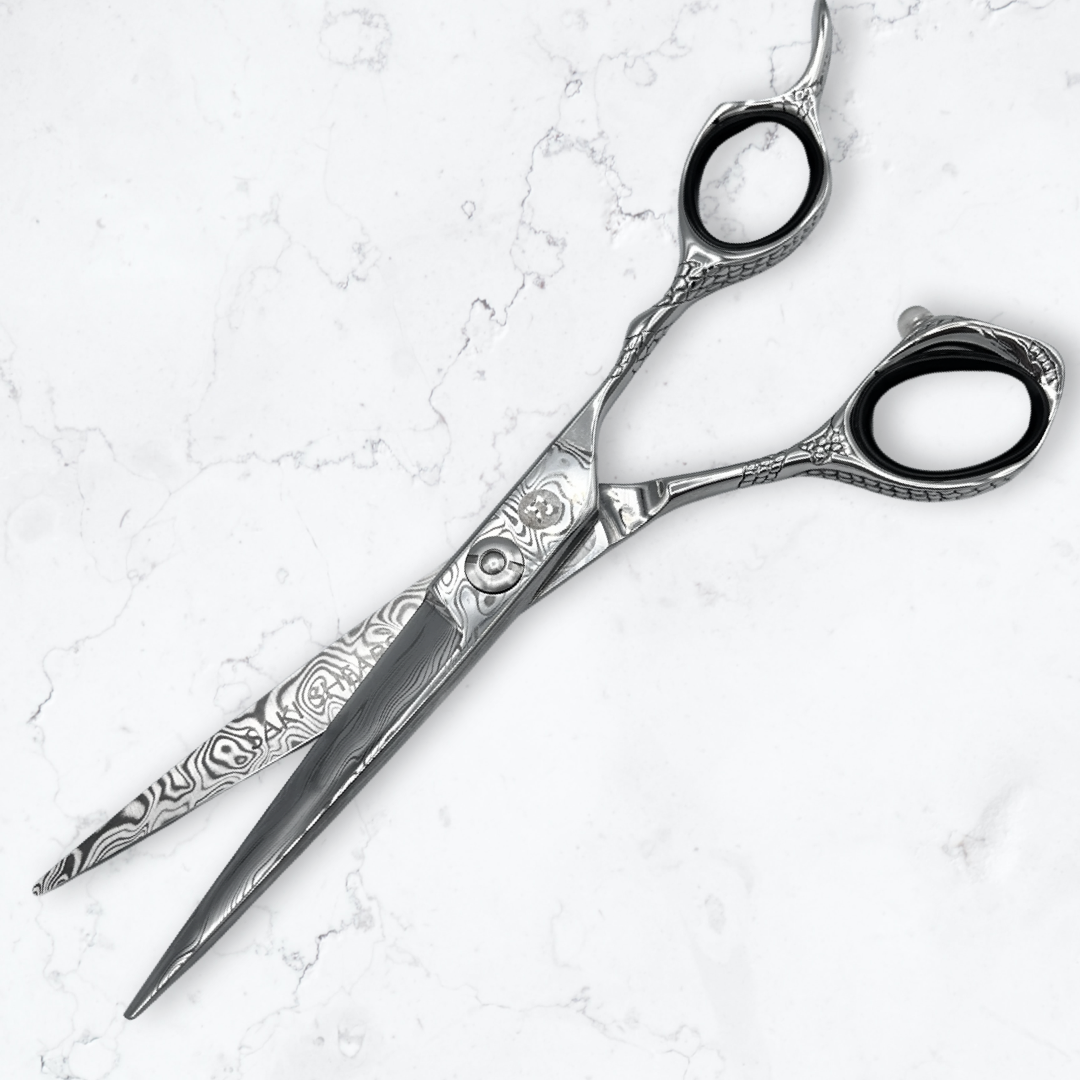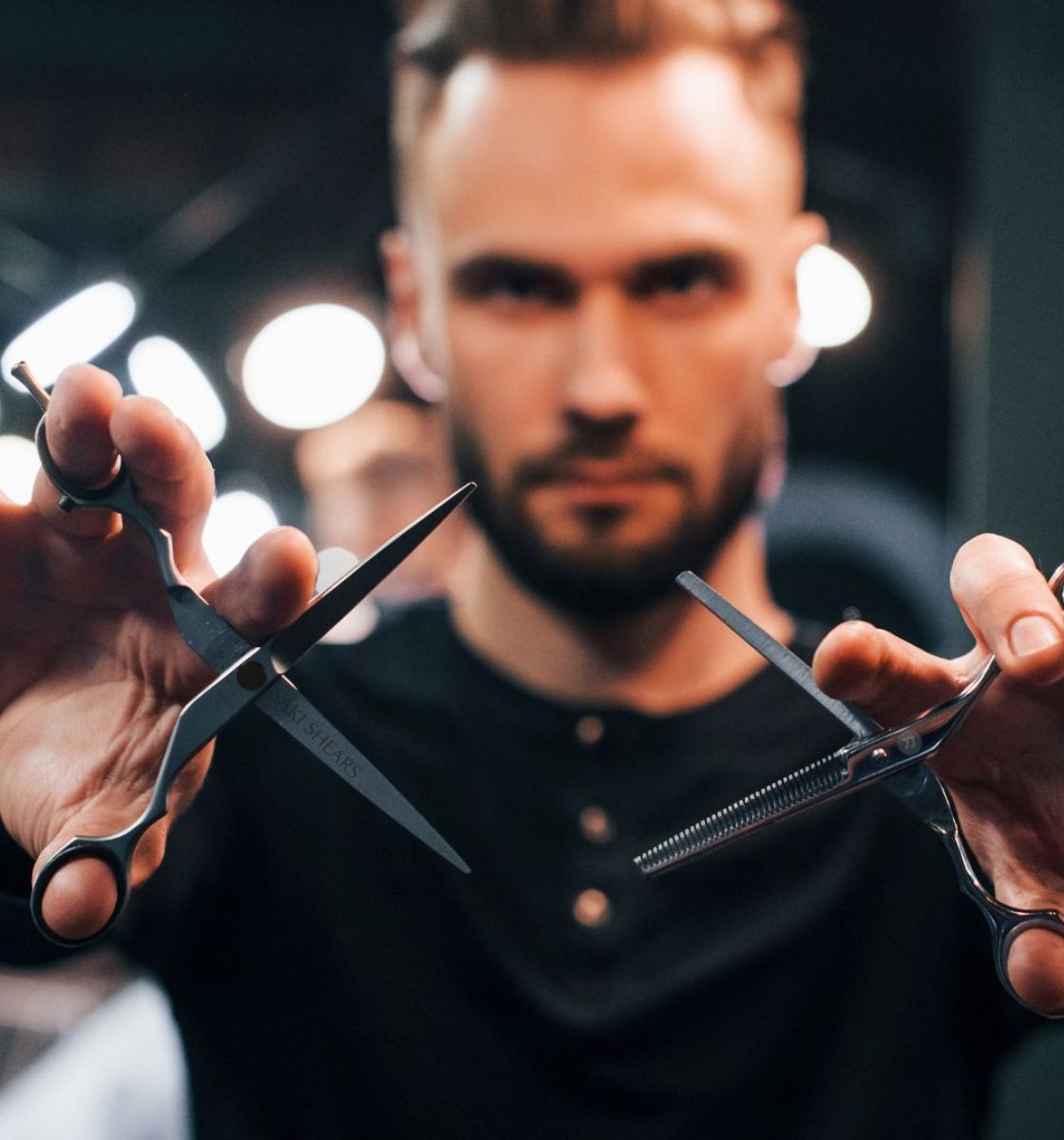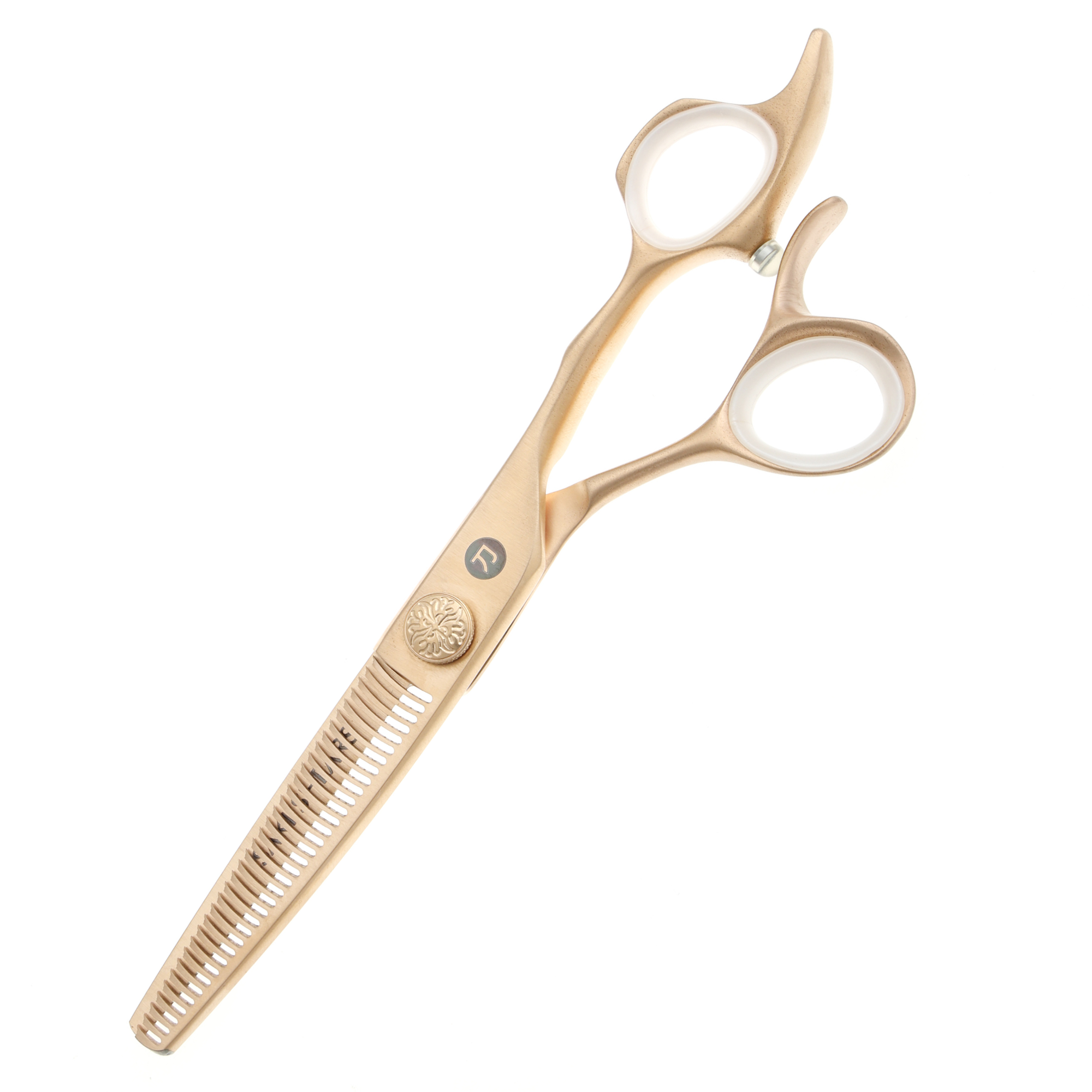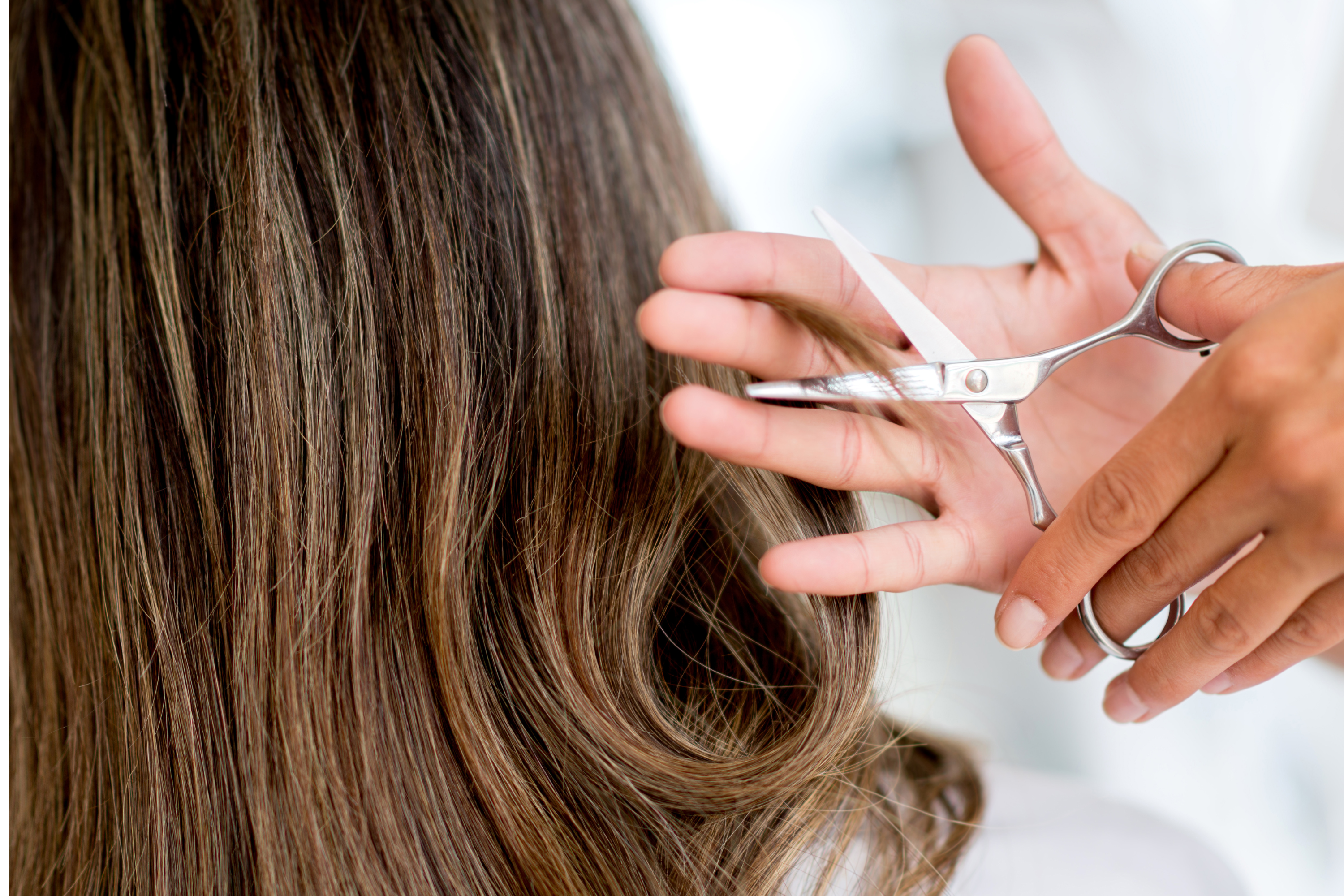Article: Mastering Your Mane: Answers to the Top Hair Queries of 2023
Mastering Your Mane: Answers to the Top Hair Queries of 2023
In the dynamic world of hair styling and care, professionals continually seek insights into best practices, client concerns, and innovative techniques. Whether armed with a trusty pair of hair shears or seeking the latest cutting-edge tools for precision and flair, today's hair stylists and barbers are at the forefront of addressing a wide array of hair-related questions. As experts in the field, it's crucial to be equipped not only with the right tools, like high-quality shears, but also with knowledge. This comprehensive guide delves into the top hair queries of 2023, offering expert insights to enrich your craft, enhance client satisfaction, and keep you a cut above the rest in this ever-evolving industry.
Question: How often should you wash your hair?
Hair washing frequency varies from person to person and largely depends on individual hair type, scalp health, and lifestyle. For some, washing every day is essential, especially if the scalp produces a lot of oil or if you engage in activities that cause you to sweat a lot. On the other hand, those with dry or coarse hair might find that washing too frequently can strip the hair of its natural oils, making it brittle and prone to breakage. Additionally, the products you use and environmental factors can also influence the optimal washing frequency. It's important to find a balance that works for your specific needs. If your hair starts to feel dry or damaged, you might want to reduce the frequency of your washes. On the contrary, if your scalp feels oily or if you notice a buildup of product, you might want to wash it more often.
Listening to your hair and scalp is key. Overwashing can strip your hair of its natural oils, leading to dryness and potential damage. Under-washing, on the other hand, can lead to a buildup of oils, dirt, and product on the scalp, which could result in dandruff or other scalp conditions. It's essential to adjust your routine based on the specific needs of your hair type, lifestyle, and any treatments or styling products you use.
Question: How fast does hair grow?
On average, human hair grows about half an inch (approximately 1.25 centimeters) per month, which translates to about 6 inches (15 centimeters) per year. However, this rate can vary depending on various factors, including genetics, age, health, diet, and hormonal fluctuations. It's important to understand that hair growth occurs in cycles, with three main phases: the anagen (growth) phase, the catagen (transitional) phase, and the telogen (resting) phase. The duration of the anagen phase, which can last from two to seven years, largely determines the length of hair.
Several factors can influence the speed of hair growth. Genetics plays a significant role; if your parents or grandparents had faster or slower hair growth, you might inherit the same trait. Age also has an impact, with hair growth typically slowing down as people age. A balanced diet rich in essential vitamins and minerals, like biotin, zinc, and vitamin E, can support optimal hair growth. On the flip side, chronic stress, illness, or significant hormonal changes, like those during pregnancy or menopause, can affect the rate at which hair grows or even cause temporary hair loss.
Question: How to grow your hair faster?
Achieving faster hair growth is a common desire, but it's essential to approach this goal holistically, focusing on both internal and external factors. Internally, a balanced diet can significantly impact the health and growth rate of your hair. Consuming foods rich in biotin, vitamin E, omega-3 fatty acids, iron, and zinc can support hair growth. Eggs, salmon, spinach, nuts, and seeds are great sources of these nutrients. Additionally, staying hydrated is crucial. Drinking adequate water ensures that the hair strand, which is about one-quarter water, remains hydrated, leading to stronger hair less prone to breakage.
Externally, regular scalp massages can help stimulate blood flow, bringing more nutrients to the hair follicles. Using natural oils like castor oil, jojoba oil, or coconut oil during these massages can nourish the scalp and strengthen hair strands. It's also essential to minimize damage to your hair. Avoid over-styling, excessive heat treatments, and harsh chemical processes. Ensure that you trim your hair regularly to get rid of split ends, which can hinder the growth by causing breakage. Lastly, be gentle when brushing or combing your hair, and use products designed for your specific hair type to maintain its health.
Question: How to braid hair?
Braiding hair is a timeless and versatile technique that offers a wide range of styles, from simple three-strand braids to more intricate designs. Here's a basic guide to creating a classic three-strand braid:
-
Preparation: Start with detangled hair. Brush or comb your hair to remove any knots or tangles. This makes the braiding process smoother and prevents hair from getting caught or pulled. You can choose to braid your hair when it's either wet or dry, depending on the desired outcome. Wet hair typically results in a tighter, neater braid, while dry hair might give a looser, more relaxed look.
-
Sectioning: Divide your hair into three equal sections. Hold the right section with your right hand, the middle section with your left hand, and let the left section rest on your shoulder or hold it between your fingers.
-
Braiding: Cross the right section over the middle section. Now, what was the right section becomes the new middle section. Next, cross the left section over the new middle section. Continue this pattern—right over middle, then left over middle—until you reach the end of your hair.
-
Securing: Once you've braided to your desired length, secure the end with a hair tie or elastic band. You can choose to leave a small tail at the end or braid all the way down to the very tips of your hair.
To elevate your braid, consider variations like the French braid, Dutch braid, or fishtail braid. Additionally, hair products like mousse or hair spray can help in achieving a more polished look and ensuring the braid holds throughout the day. Remember, like any skill, braiding improves with practice, so don't get discouraged if your first attempts aren't perfect.
Question: How to cut your own hair?
Cutting your own hair can be a daunting task, especially if you've never done it before. While it's always best to visit a professional stylist for significant changes, you can trim and maintain your hair at home with the right tools and techniques. Here's a step-by-step guide:
-
Preparation: Start with clean, damp hair. Wet hair is easier to manage and cut evenly. Use a fine-tooth comb to remove any tangles. Ensure you have sharp scissors specifically designed for hair cutting, as regular scissors can cause uneven cuts and hair damage.
-
Sectioning: Divide your hair into sections. Depending on your hair's length and thickness, you might need between 4 to 8 sections. Use hair clips to hold each section in place. This not only makes the process more manageable but also ensures an even cut across the entire head.
-
Trimming: Start with a smaller section, ideally from the back of your head. Comb the section straight and hold it between your index and middle fingers, sliding them down to the desired length. Trim below your fingers, cutting in a straight line. Always cut less than you think, as you can always trim more later. Repeat this process for each section, ensuring evenness by comparing sections side by side.
-
Layering & Texturizing (if desired): If you're looking to add layers or texturize, point the scissors upward and make small, careful snips into the ends of your hair. This will create a softer, more blended finish.
-
Finishing: Once you've finished cutting, rinse your hair to remove any loose strands. Style as usual and check for any uneven areas. If you spot any, make small adjustments as needed.
While cutting your own hair can be empowering and economical, there's always a risk. If you're unsure or hesitant, it's best to wait and consult with a professional. If you do proceed, take your time, and remember that less is more; you can always trim more later if needed.
Question: How to get hair dye off skin?
Hair dye can sometimes stain the skin, especially around the hairline, ears, and neck. Fortunately, there are several methods to remove these stains safely. Here's how:
-
Soap and Water: As soon as you notice the dye on your skin, act quickly. Fresh stains are easier to remove. Gently rub the stained area with a soapy washcloth, making sure not to scrub too hard to avoid irritation.
-
Makeup Remover: Many makeup removers, especially those designed to remove waterproof makeup, can be effective at breaking down hair dye stains. Dab some onto a cotton ball or pad and gently rub it over the stained area.
-
Olive Oil or Baby Oil: Oils can help dissolve the dye. Apply a small amount of oil to a cotton ball and gently rub the stain. Leave it on for a few minutes, then wipe away with a clean cloth. This method can be especially soothing if the skin has become irritated.
-
Dish Soap and Baking Soda: Create a mixture with equal parts dish soap and baking soda to form a paste. Apply this paste onto the stain using your fingers or a cloth, then rub gently in a circular motion. After a few minutes, rinse with warm water.
-
Toothpaste: Non-gel toothpaste can act as a mild abrasive to help remove the stain. Apply a small amount onto the stained area and rub gently with a cloth. Rinse with warm water afterward.
While all these methods can be effective, it's essential to be gentle to avoid irritating the skin. Always follow up with a moisturizer to replenish any lost moisture from the skin. For future dye jobs, consider applying a barrier like petroleum jelly around your hairline, ears, and neck to prevent the dye from staining your skin in the first place.
Question: How to curl hair with a flat iron?
Curling hair with a flat iron, or straightener, can produce sleek and bouncy curls. It's a technique that requires a bit of practice, but once mastered, it can be a versatile tool in your hairstyling repertoire. Here's a step-by-step guide:
-
Preparation: Begin with clean, dry hair. Apply a heat protectant spray or serum to shield your hair from potential heat damage. This step is crucial, as flat irons can reach high temperatures that might damage unprotected hair.
-
Sectioning: Divide your hair into sections to make the curling process more manageable. The size of the section will determine the curl's size: smaller sections for tighter curls and larger ones for looser waves. Clip up the top layers and start with the bottom layers.
-
Curling: Hold the flat iron vertically. Clamp a section of hair at the root, twist the flat iron 180 degrees (half a turn) away from your face, and then slowly glide it down the length of your hair. The slower you move, the tighter the curl will be. Ensure the hair remains wrapped around the iron as you pull it through.
-
Setting: Once you've curled all sections, let your hair cool down. This sets the curls and ensures longevity. Avoid brushing the curls immediately. Instead, use your fingers to separate or shape them.
-
Finishing: Apply a light hairspray to hold the curls in place and add some shine. For extra volume, you can gently tease the roots with a comb.
A few tips for better results:
- Ensure the flat iron plates are clean to achieve a smooth glide.
- Experiment with the temperature settings. Thicker hair may require higher heat, while fine hair should be curled at a lower temperature.
- Always curl away from the face for a more natural, flattering look.
Remember, like any hairstyling technique, curling with a flat iron takes practice. With time, you'll learn how to achieve your desired curl type and how your hair responds to different techniques and temperatures.
Question: Why is my hair falling out?
Hair loss or thinning can be a concerning experience, and it's often the result of a combination of factors. Understanding the possible causes can help in addressing the issue effectively. Here are some common reasons for hair fall:
-
Genetics: Hereditary-pattern baldness is the most common cause of hair loss. Known as androgenic alopecia in medical terms, it happens gradually and in predictable patterns. Men may experience receding hairlines and bald spots, while women may notice thinning along the crown.
-
Hormonal Changes: Hormonal fluctuations due to pregnancy, childbirth, menopause, or thyroid imbalances can lead to temporary or permanent hair loss. Conditions like polycystic ovary syndrome (PCOS) can also impact hair health.
-
Medications and Supplements: Some drugs, like those used for cancer, arthritis, depression, heart problems, and high blood pressure, can lead to hair loss as a side effect.
-
Stress: Physical or emotional stress can cause a type of hair loss called telogen effluvium. This typically results in temporary hair shedding rather than bald patches.
-
Hairstyles and Treatments: Tightly pulling your hair into ponytails, buns, or braids can cause a type of hair loss called traction alopecia. Harsh hair treatments, like hot oil treatments and permanents, can also lead to hair loss.
-
Dietary Deficiencies: Lack of essential nutrients, especially iron, protein, and biotin, can affect hair health and cause shedding.
-
Underlying Medical Conditions: Alopecia areata is an autoimmune condition where the immune system attacks hair follicles. Diseases like lupus and diabetes can also cause hair loss.
-
Poor Scalp Health: Conditions like seborrheic dermatitis, dandruff, or fungal infections can weaken the hair roots and lead to shedding.
If you're experiencing significant hair loss, it's essential to consult with a dermatologist or trichologist. They can provide a precise diagnosis and recommend appropriate treatments. Remember, it's normal to lose 50 to 100 hairs a day. But if you notice sudden or patchy hair loss or more significant than usual shedding, it's crucial to seek professional advice.
Question: Can you dye your hair while pregnant?
Hair dyeing during pregnancy is a topic that has garnered much attention and debate. Many expectant mothers want to maintain their usual beauty routines, including hair coloring, but also want to ensure the safety of their developing baby. Here's what current research and expert opinions suggest:
-
Chemical Exposure: Most hair dyes contain chemicals, some of which can be absorbed by the skin. However, the amount that could potentially be absorbed from a single application is relatively low. According to numerous studies and the American College of Obstetricians and Gynecologists (ACOG), there's no substantial evidence indicating that using hair dye during pregnancy increases the risk of birth defects or other pregnancy complications.
-
Recommendations: While the risk appears minimal, many healthcare professionals advise erring on the side of caution. If you choose to dye your hair during pregnancy, consider waiting until the second trimester when the baby's critical organs have already formed. Opt for safer alternatives, like semi-permanent dyes or natural treatments like henna. Ensure that the salon or area where you're dyeing your hair is well-ventilated to minimize inhalation of any fumes.
-
Highlights and Other Techniques: Techniques where the dye doesn't come into direct contact with the scalp, such as highlights, foils, or balayage, are generally considered safer options during pregnancy, as the skin absorbs fewer chemicals.
-
Hair Texture and Growth Changes: It's essential to note that hormonal changes during pregnancy can alter the texture and growth rate of your hair. This might affect how your hair absorbs color, potentially leading to unexpected results.
-
Patch Test: Due to hormonal fluctuations, you may become more sensitive to ingredients you've used before without issues. Always conduct a patch test before any full application to ensure you don't have an allergic reaction.
In summary, while the evidence suggests minimal risks associated with hair dyeing during pregnancy, it's essential to discuss your concerns and decisions with a healthcare professional. They can provide guidance tailored to your specific situation and ease any anxieties you might have.
Question: How to curl your hair?
Achieving beautiful curls can transform your look and add a touch of glamour or playfulness to your style. There are various methods to curl hair, ranging from heat tools to no-heat techniques. Here's a basic guide to curling your hair:
-
Using a Curling Iron:
- Preparation: Begin with clean, dry hair. Apply a heat protectant to shield your hair from potential damage. Choose a curling iron with a barrel size that matches the type of curl you desire (e.g., smaller barrels for tighter curls).
- Technique: Section your hair for easier curling. Starting from the bottom layers, wrap a section of hair around the barrel, holding the ends. Keep it wrapped for a few seconds, then release. Always curl away from your face for a more natural look.
-
Heat-Free Methods:
- Braids: For loose, wavy curls, braid damp hair before bedtime and leave it overnight. The number and tightness of the braids will determine the curl's size and definition.
- Bun: Twist damp hair into one or multiple buns and secure. Allow it to dry naturally or overnight for soft, voluminous waves.
- Hair Rollers: These can be foam, velcro, or hot rollers. Wrap sections of damp or dry hair around rollers and leave them for several hours or overnight.
-
Setting & Finishing:
- After curling, avoid brushing your hair immediately. Instead, use your fingers to separate and set the curls. To maintain the curls' shape and longevity, apply a light hairspray or setting spray.
-
Tips for Lasting Curls:
- Hair that's a day or two post-wash often holds curls better than freshly washed hair.
- Before curling, using products like mousse or hair sprays can provide texture and help curls last longer.
- Letting curls cool down properly after using heat will help them set and last longer.
Remember, everyone's hair is unique, so the method and products that work best for you might differ from someone else's. Experiment with different techniques to find what gives you the desired curl type and longevity.
Question: How to style short hair?
Short hair can be incredibly versatile, offering a myriad of styling options. Depending on the cut and your hair type, you can achieve everything from edgy looks to soft, romantic styles. Here's a guide to styling short hair:
-
Textured and Tousled:
- Preparation: On damp hair, apply a volumizing mousse or texturizing spray.
- Styling: Blow-dry your hair using your fingers to add volume and shape. Once dry, use a texturizing pomade or wax to create definition and a tousled finish.
-
Sleek and Straight:
- Preparation: Apply a heat protectant and a smoothing serum to damp hair.
- Styling: Using a flat iron, straighten your hair section by section. Finish with a shine spray for a glossy appearance.
-
Waves and Curls:
- Preparation: Start with a heat protectant.
- Styling: Use a small-barreled curling iron or flat iron to create waves or curls. Remember to curl away from the face for a more natural look. Finish with a light hairspray.
-
Pompadour or Quiff:
- Preparation: Apply a styling mousse to damp hair for volume.
- Styling: Blow-dry your hair while lifting it upwards and backwards using a round brush. Once dry, style it further using pomade or hair wax, pushing the hair back and up.
-
Accessorize:
- Hairpins, barrettes, headbands, and scarves can add a chic touch to short hairstyles. They're not only decorative but can also help keep hair in place.
-
Maintain the Cut:
- Short haircuts often require regular trims to keep their shape. Depending on the style, you may need to visit your stylist every 4-6 weeks.
-
Experiment with Products:
- Different products can drastically change the look and feel of short hair. Experiment with clays, waxes, gels, and sprays to discover what works best for your desired style.
Short hair can be both practical and stylish, lending itself to quick changes and easy maintenance. The key is to embrace the length, play with textures, and not be afraid to try out new products and tools. With a bit of creativity, short hair can be every bit as dynamic as longer locks.
Question: How to get gum out of hair?
Discovering gum stuck in hair can be a distressing situation, but it's important to remember that it's usually salvageable without resorting to scissors. Here are several methods to remove gum from hair:
-
Peanut Butter or Almond Butter:
- Application: Apply a generous amount of peanut or almond butter to the gummed area. The oils in the butter will help to break down the gum's sticky consistency.
- Technique: Gently work the butter into the gum using your fingers. As you do this, you'll notice the gum starting to break apart. Once it's thoroughly broken down, comb through the hair to remove any remnants.
-
Oil (Vegetable, Olive, or Coconut):
- Application: Oils can act as solvents, breaking down the gum. Dab a generous amount of your chosen oil onto the gum.
- Technique: Gently massage the oil into the gum, which will cause it to loosen and break apart. Using a wide-tooth comb, gently comb out the gum fragments from the hair.
-
Ice Cubes:
- Application: If you'd rather not use oily substances, ice can harden the gum, making it easier to remove.
- Technique: Hold an ice cube against the gum until it hardens. Once solidified, gently break the gum apart and comb it out.
-
Lip Balm:
- Application: The waxy consistency of lip balm can help dislodge gum.
- Technique: Apply lip balm generously to the gummed area, then work it in with your fingers or a comb until the gum starts to slide off the hair.
-
Vinegar:
- Application: White vinegar can help dissolve the gum's stickiness.
- Technique: Soak the affected area in vinegar for a few minutes. Then gently comb or slide the gum out.
-
Hair Conditioner or Dish Soap:
- Application: These products can help lubricate the hair and reduce gum's stickiness.
- Technique: Apply either conditioner or dish soap to the gummed area. Work it in gently, then use a comb or your fingers to remove the gum.
After using any of these methods, it's a good idea to shampoo and condition the hair to remove any residual gum fragments or product remnants. The key to successfully removing gum from hair is patience. Avoid pulling or tugging harshly, as this can cause damage or breakage.
Question: How to thicken hair?
Achieving thicker-looking hair is a common desire for many, as luscious locks often equate to health and beauty. While one's hair thickness is largely determined by genetics, there are strategies and treatments that can help enhance the appearance and health of your hair:
-
Volumizing Hair Products:
- Usage: Incorporate volumizing shampoos, conditioners, and sprays into your haircare routine. These products are designed to lift the hair at the root and create an illusion of thicker strands.
- Benefits: They temporarily boost volume, making hair appear fuller.
-
Hair Growth Serums and Topical Treatments:
- Usage: Products containing ingredients like minoxidil, which is FDA-approved, can stimulate hair growth in individuals with thinning hair.
- Benefits: Over time, regular application can lead to increased hair density.
-
Scalp Massage:
- Technique: Gently massaging the scalp stimulates blood flow, which can encourage hair growth.
- Benefits: Beyond hair health, scalp massages can also be relaxing and reduce tension.
-
Healthy Diet:
- Recommendation: Consume a balanced diet rich in proteins, omega-3 fatty acids, vitamins, and minerals. Foods like salmon, spinach, eggs, nuts, and seeds can be beneficial for hair health.
- Benefits: Proper nutrition can support healthy hair growth and enhance hair thickness.
-
Hair Extensions or Hairpieces:
- Usage: For those seeking immediate results, hair extensions or hairpieces can add significant volume and length.
- Benefits: They provide a temporary solution for special occasions or everyday wear.
-
Avoid Overprocessing:
- Recommendation: Limit the use of chemical treatments, like relaxers, perms, and frequent coloring. Also, avoid overusing heat tools.
- Benefits: Reducing chemical and heat exposure can prevent hair breakage and maintain hair thickness.
-
Hair Growth Supplements:
- Usage: Biotin, zinc, vitamin E, and other hair supplements are commonly believed to promote hair growth. However, always consult with a healthcare professional before starting any new supplement.
- Benefits: While results vary, some individuals report improved hair thickness and health after consistent supplementation.
-
Medical Consultation:
- Recommendation: If you experience sudden or significant hair thinning, it's essential to consult a dermatologist or trichologist. Conditions like androgenic alopecia, telogen effluvium, or underlying health issues could be the cause.
- Benefits: A professional can provide a precise diagnosis and suggest treatments tailored to your situation.
In summary, while not everyone's hair can be transformed into thick, voluminous locks, these strategies can help in improving hair's overall appearance and health. It's essential to set realistic expectations and understand that results can vary based on individual factors.
Question: What is hair made of?
Hair is an integral aspect of human identity, playing a role in aesthetics, protection, and even sensory function. To understand hair better, it's crucial to delve into its structure and composition:
-
Keratin:
- Composition: Hair is primarily composed of a protein called keratin. Keratin is a fibrous structural protein that also makes up our nails and the outer layer of our skin.
- Characteristics: Keratin provides strength to each hair strand. The helical shape of keratin molecules allows hair to be stretched and then return to its original shape. This is why hair can be curled, straightened, and yet go back to its natural form after washing.
-
Hair Structure:
- The Cuticle: This is the hair's outermost layer, made up of overlapping cells resembling roof shingles. It acts as a protective barrier for the inner hair structures. Healthy cuticles lay flat and give hair a smooth appearance, while damaged ones can cause hair to look frizzy or dull.
- The Cortex: Located beneath the cuticle, the cortex makes up the majority of the hair's mass and contains the hair's melanin, which determines its color. The cortex is also responsible for the hair's elasticity and strength.
- The Medulla: This is the hair's innermost layer, though it's not always present in every hair type, especially fine hair. Its exact function isn't fully understood, but it may play a role in the transfer of nutrients.
-
Hair Pigment:
- Melanin: Hair color is determined by the type and amount of melanin present. There are two primary types of melanin in hair: eumelanin (responsible for brown and black hair shades) and pheomelanin (responsible for red and yellow hair shades). The combination and concentration of these pigments determine an individual's specific hair color.
-
Lipids and Natural Oils:
- Sebum: Produced by the sebaceous glands located near the hair follicle, sebum is a natural oil that lubricates the hair and scalp. This oil plays a crucial role in keeping the hair conditioned and healthy.
-
Trace Elements:
- Hair contains small amounts of minerals like zinc, copper, and iron, which reflect our nutritional status and environmental exposures.
In essence, while hair may seem simple, it's a complex structure with various components working in tandem. Proper care, nutrition, and understanding can help maintain its health and appearance. Knowledge of hair's composition also plays a pivotal role in the hair care and beauty industry, where products and treatments are designed based on this understanding.
Question: How to use rosemary oil for hair growth?
Rosemary oil is a popular natural remedy, and there's growing evidence suggesting it can be beneficial for hair health and growth. Its properties may stimulate the scalp, improve hair thickness, and even combat hair loss in some cases. Here's how to utilize rosemary oil for optimal hair benefits:
-
Rosemary Oil Scalp Massage:
- Method: Mix a few drops of rosemary oil with a carrier oil (like coconut oil, jojoba oil, or almond oil). Gently massage this mixture into your scalp using circular motions. This not only helps in distributing the oil but also improves blood circulation.
- Benefits: Scalp massages can stimulate the hair follicles, promoting growth. The combined properties of the carrier oil and rosemary can nourish and fortify the scalp.
-
Rosemary Oil Hair Mask:
- Method: Combine rosemary oil with ingredients like honey, egg yolk, or yogurt to create a nourishing hair mask. Apply this mixture to your hair and scalp, leave on for 20-30 minutes, and then wash it off with a mild shampoo.
- Benefits: Such masks can deeply condition the hair, combat dryness, and enhance overall hair texture.
-
Rosemary Oil in Shampoo or Conditioner:
- Method: Add a few drops of rosemary oil to your regular shampoo or conditioner. Use this infused product as you normally would.
- Benefits: This provides a consistent application of rosemary oil, potentially strengthening hair and promoting growth with every wash.
-
Hot Oil Treatment:
- Method: Warm a mixture of carrier oil and a few drops of rosemary oil. Ensure it's comfortably warm and not hot. Apply to your scalp and hair, wrap your head with a warm towel, and let it sit for at least 30 minutes before washing.
- Benefits: This can help in deeper penetration of the oils, providing moisture, reducing frizz, and potentially stimulating growth.
-
Precautions:
- Patch Test: Before using rosemary oil extensively, perform a patch test to ensure you're not allergic or sensitive to it. Apply a small amount diluted with a carrier oil to your inner forearm and wait for 24 hours to check for any reactions.
- Concentration: Always dilute essential oils, including rosemary oil, with a carrier oil before applying them to the scalp or skin to prevent irritation.
While rosemary oil offers potential benefits for hair growth and health, results can vary from person to person. It's essential to use it consistently over a period to gauge its effectiveness. If hair loss or thinning is a significant concern, it's advisable to consult a dermatologist or trichologist for a comprehensive evaluation and tailored recommendations.
Question: Why is my hair thinning?
Hair thinning is a concern for many, and its causes can be multifaceted. From genetic factors to lifestyle choices, understanding the potential reasons can provide insights into targeted interventions and care:
-
Genetics:
- Overview: Androgenic alopecia, commonly referred to as male or female pattern baldness, is the most prevalent cause of hair thinning. It's largely hereditary and follows a pattern where hair loss occurs in specific areas.
- Identification: Men may notice a receding hairline and thinning at the crown, while women typically experience thinning throughout the scalp, especially at the parting.
-
Hormonal Changes:
- Overview: Hormonal imbalances due to events like pregnancy, menopause, or thyroid issues can lead to hair thinning or loss.
- Identification: Postpartum hair loss is common after childbirth but is usually temporary. Menopause-related thinning might be more gradual. Thyroid-related hair loss is often accompanied by other symptoms like fatigue or weight changes.
-
Stress:
- Overview: Physical or emotional stress can trigger telogen effluvium, a temporary hair thinning condition.
- Identification: Hair thinning or shedding might be observed a few months after a stressful event or trauma.
-
Diet and Nutrition:
- Overview: A lack of essential nutrients like iron, protein, vitamins, and minerals can result in hair thinning or breakage.
- Identification: Those on restrictive diets or with eating disorders may notice increased hair shedding.
-
Medications and Treatments:
- Overview: Some medications, like certain antidepressants, blood thinners, and birth control pills, can lead to hair thinning as a side effect.
- Identification: If hair loss coincides with starting a new medication, it might be a contributing factor.
-
Overprocessing and Styling:
- Overview: Constant use of heat tools, chemical treatments, or tight hairstyles can weaken hair and lead to breakage.
- Identification: Hair might appear thinner, especially towards the ends, or break easily.
-
Underlying Medical Conditions:
- Overview: Conditions like polycystic ovary syndrome (PCOS), lupus, and dermatological issues can cause hair thinning.
- Identification: Hair loss might be accompanied by other symptoms related to the specific condition.
-
Aging:
- Overview: As one ages, hair naturally becomes finer, and growth rates might decrease.
- Identification: Gradual thinning as one grows older is common and can be considered a natural part of the aging process.
If someone notices unusual or sudden hair thinning, it's crucial to consult with a dermatologist or trichologist. They can provide a precise diagnosis and recommend tailored treatments or interventions. Furthermore, it's essential to approach hair care with gentleness, ensuring you're nourishing and protecting your scalp and strands.
Question: How long do edibles stay in your hair?
When discussing "edibles," the context usually refers to cannabis-infused food products. Testing for cannabis use often focuses on detecting THC (tetrahydrocannabinol), the psychoactive compound in marijuana. Various tests can detect THC consumption, including hair follicle tests. Here's what you should know about THC and hair testing:
-
Hair Follicle Drug Tests:
- Overview: Hair testing is a popular method for detecting long-term drug use, including cannabis. When THC is consumed, it is metabolized and enters the bloodstream. Small amounts of its metabolites get deposited into the hair follicles and eventually into the strands as they grow.
- Detection Window: Hair follicle tests can detect drug use for a more extended period compared to urine or blood tests. Generally, the standard hair sample is 1.5 inches, representing approximately 90 days of growth. This means THC use within the past three months can be detected.
-
Factors Affecting Detection:
- Frequency of Use: An occasional user might have a lower chance of detection compared to a frequent or heavy user. The more often one consumes THC, the higher the concentration of metabolites in the hair.
- Hair Growth Rate: While the average rate of hair growth is about half an inch per month, individual variations can affect the exact detection window.
- Hair Type and Color: Some studies suggest that thicker and darker hair may absorb and retain drugs at a higher rate than thin or light-colored hair.
-
Limitations and Considerations:
- External Contamination: There's some debate about whether hair can be contaminated by external cannabis smoke. While it's possible for hair to be externally contaminated, washing procedures during testing aim to eliminate external residues.
- Body Hair: If scalp hair is unavailable or too short, body hair might be used for testing. However, the growth rate of body hair is different, which could extend the detection window.
- False Positives: As with all drug tests, there's potential for false positives. Cross-reactivity with other substances, certain medications, or testing errors can contribute.
It's essential to understand that while hair tests can detect THC metabolites, they don't necessarily provide information about the frequency of use, the amount consumed, or impairment level. In legal or employment contexts, it's vital to be aware of the policies and potential implications related to cannabis consumption.
Question: How to donate hair?
Donating hair is a generous act that can significantly benefit individuals experiencing hair loss due to medical conditions, treatments, or other reasons. If you're considering donating, it's essential to understand the process and guidelines to ensure your donation is suitable for its intended purpose. Here's a step-by-step guide:
-
Research Organizations:
- Overview: Many organizations accept hair donations to create wigs for patients, especially children, dealing with hair loss. Some notable organizations include "Locks of Love," "Wigs for Kids," and "Pantene Beautiful Lengths."
- Criteria: Each organization has specific requirements regarding hair length, condition, and processing. Ensure you review their guidelines before proceeding.
-
Prepare Your Hair:
- Washing: Clean your hair with shampoo and conditioner, ensuring it's free from styling products. Hair should be dry before cutting.
- Avoid Chemical Treatments: Most organizations prefer virgin hair, which means hair that hasn't been dyed, bleached, or chemically treated. Some organizations, however, do accept chemically treated hair with certain restrictions.
- Hair Length: Typically, organizations require a minimum length, often around 10-12 inches or more. However, this can vary, so always check the specific requirements.
-
Cutting Process:
- Ponytails or Braids: Hair should be divided into multiple ponytails or braids. This not only ensures an even cut but also makes handling and shipping easier.
- Secure: Tie the hair with hairbands at both the top (near the scalp) and bottom of the ponytail or braid. This prevents the hair from becoming loose or tangled during transit.
- Cut Above the Band: Ask your hairdresser to cut the hair just above the uppermost hairband.
-
Storing and Shipping:
- Dry Hair: Make sure your hair is completely dry before placing it in a plastic bag. Moisture can cause mold.
- Packaging: Place the sealed plastic bag with your hair into a padded or protective envelope.
- Fill Out Forms: Some organizations may require a donation form. Ensure you fill out any necessary paperwork and include it in your shipment.
-
Post-Donation:
- Acknowledgment: Most organizations will send a thank-you note or email acknowledging your donation. This can take a few weeks to a couple of months, depending on the organization.
-
Additional Considerations:
- Monetary Donations: Some organizations might also appreciate monetary contributions to cover the wig-making process's costs, as creating a wig can be expensive.
- Gray or Aged Hair: While many organizations primarily focus on children, some accept gray or aged hair for adult wigs. Always check the guidelines to ensure your hair can be used.
Remember, donating hair is a heartfelt gesture that can make a world of difference to someone in need. It's always a good idea to check the organization's credibility and ensure that your donation will genuinely benefit someone before proceeding.
Question: How to get rid of frizzy hair?
Frizzy hair can be a common challenge for many, often resulting from a lack of moisture in the hair or environmental factors. Managing and reducing frizz requires understanding its causes and implementing targeted strategies. Here's how to address and prevent frizzy hair effectively:
-
Deep Conditioning:
- Overview: One of the primary reasons for frizzy hair is a lack of moisture. Deep conditioning treatments infuse the hair with moisture, making it smoother and less prone to frizz.
- Recommendation: Use a deep conditioner or hair mask at least once a week. Focus on the mid-lengths and ends of your hair, leaving it on for the duration specified on the product. For a natural alternative, treatments with coconut oil or argan oil can be beneficial.
-
Avoid Overwashing:
- Overview: Shampooing too frequently can strip the hair of its natural oils, leading to dryness.
- Recommendation: Depending on your hair type, consider washing your hair every other day or even less frequently. When you do shampoo, ensure you're using a sulfate-free product, as sulfates can be harsh on the hair.
-
Use a Microfiber Towel or T-shirt:
- Overview: Traditional terrycloth towels can roughen the hair cuticle, leading to frizz.
- Recommendation: After washing, gently squeeze excess water from your hair and then wrap it in a microfiber towel or a soft cotton t-shirt. These materials are gentler and less likely to cause frizz.
-
Avoid Heat Styling:
- Overview: Regular use of heat tools like straighteners, curling irons, and blow dryers can damage the hair and exacerbate frizz.
- Recommendation: Limit the use of heat tools and always apply a heat protectant spray before styling. When possible, let your hair air dry or use the cool setting on your hairdryer.
-
Use a Leave-In Conditioner or Serum:
- Overview: These products add an extra layer of protection, sealing in moisture and preventing environmental factors from affecting the hair.
- Recommendation: Apply a leave-in conditioner or anti-frizz serum, focusing on the ends and any particularly frizzy areas.
-
Regular Trims:
- Overview: Split ends can lead to an increased appearance of frizz.
- Recommendation: Schedule regular trims every 6-8 weeks to keep your hair healthy and reduce split ends.
-
Embrace Natural Hair Texture:
- Overview: Often, fighting against your natural hair texture can increase frizz.
- Recommendation: Consider adopting styling methods that work with your natural hair type, whether it's curly, wavy, or straight. Techniques like the "Curly Girl Method" can help define curls and reduce frizz.
-
Environment Considerations:
- Overview: Humidity is a common culprit of frizz.
- Recommendation: On humid days, consider protective hairstyles like buns or braids. Using anti-humidity hair sprays or products can also be beneficial.
Remember, everyone's hair is unique, and what works for one person might not work for another. It's essential to experiment and find a routine tailored to your specific hair type and needs.
Saki Shears Sale
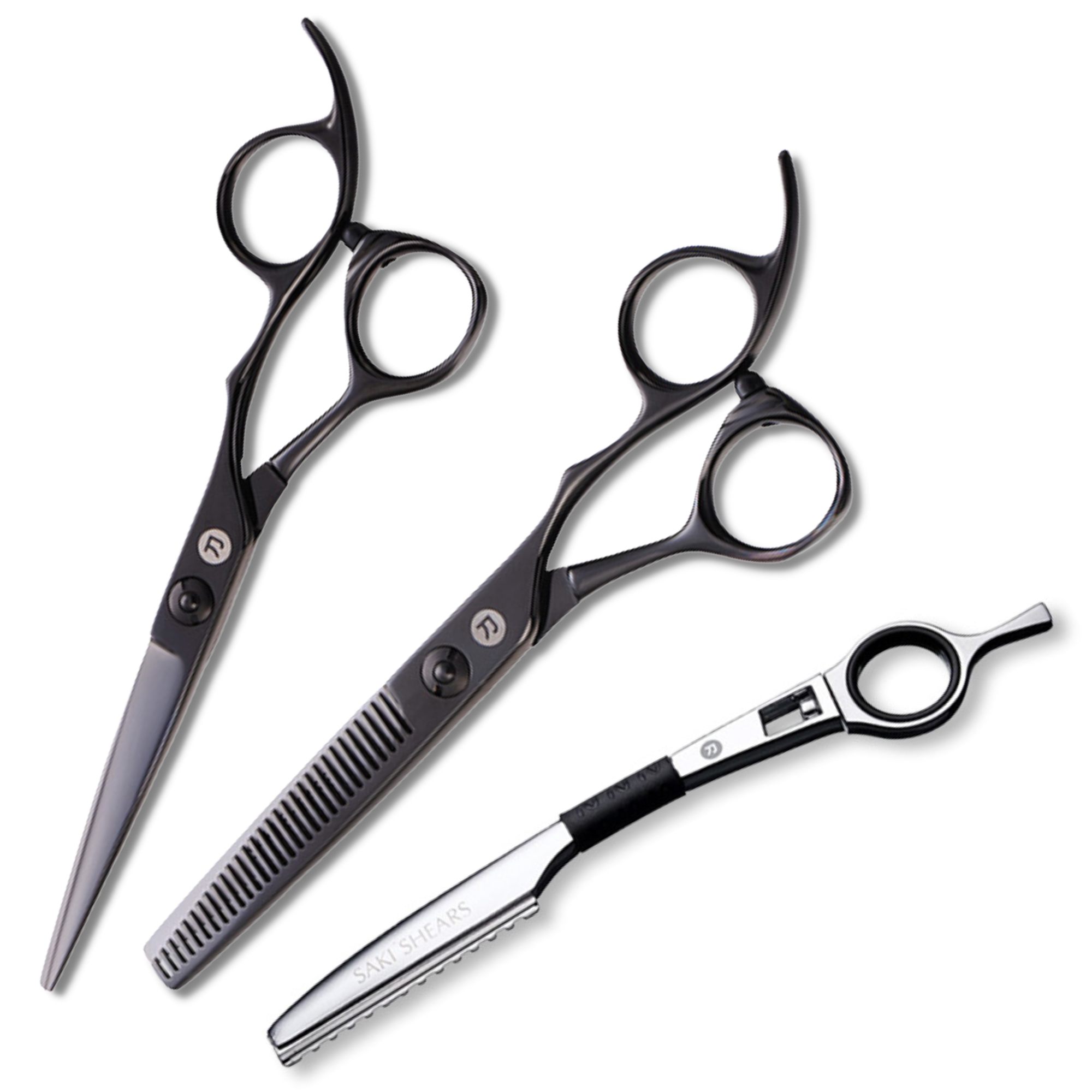
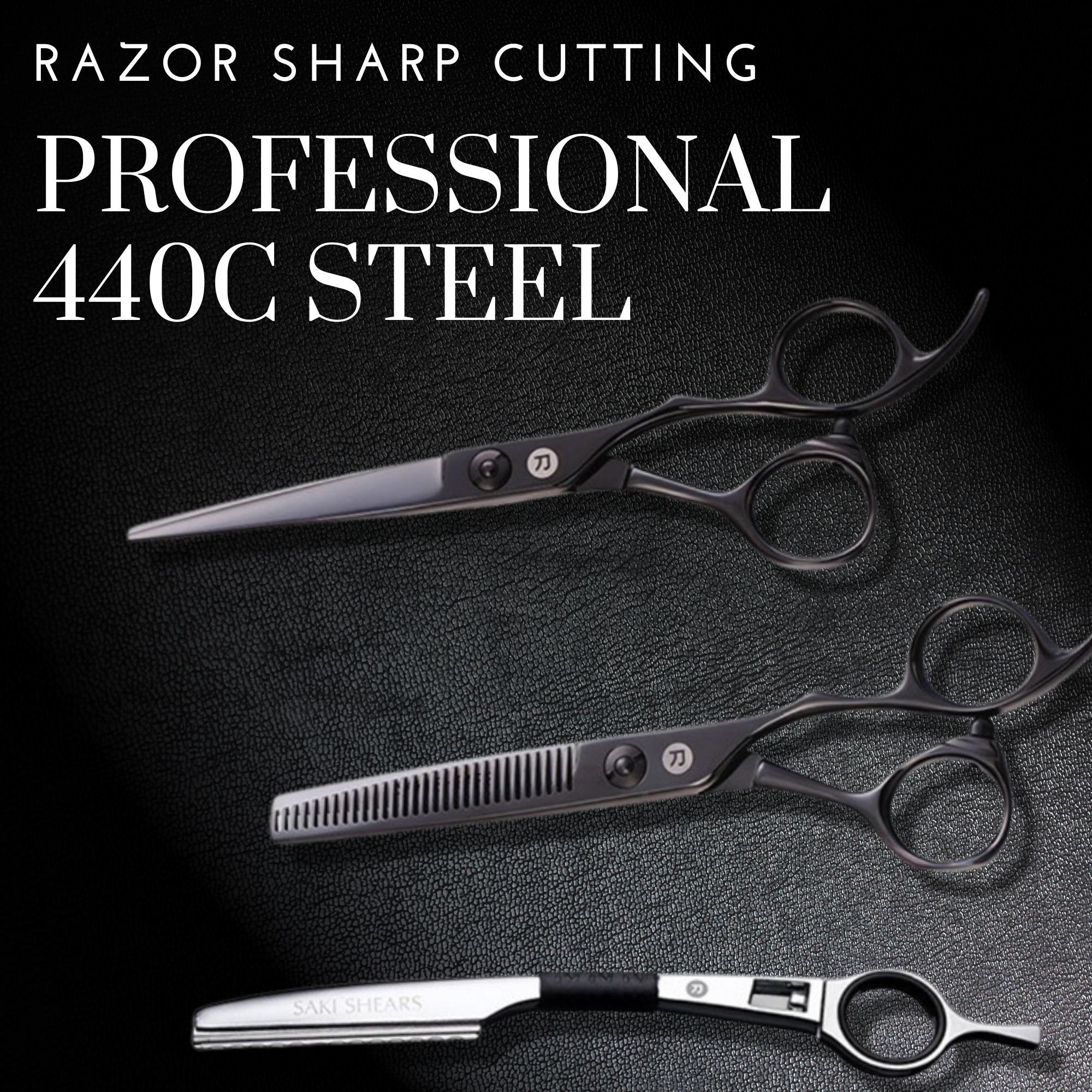
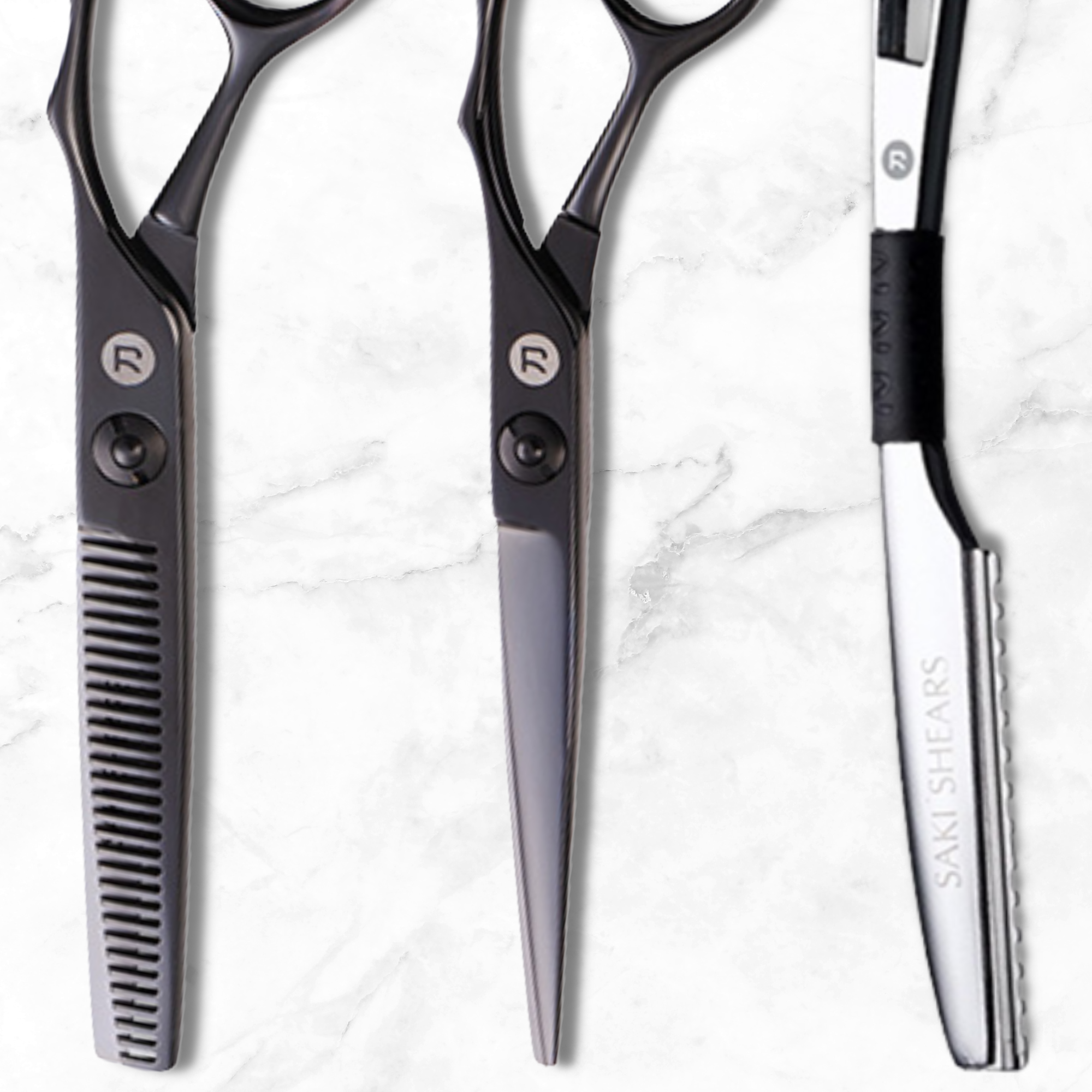
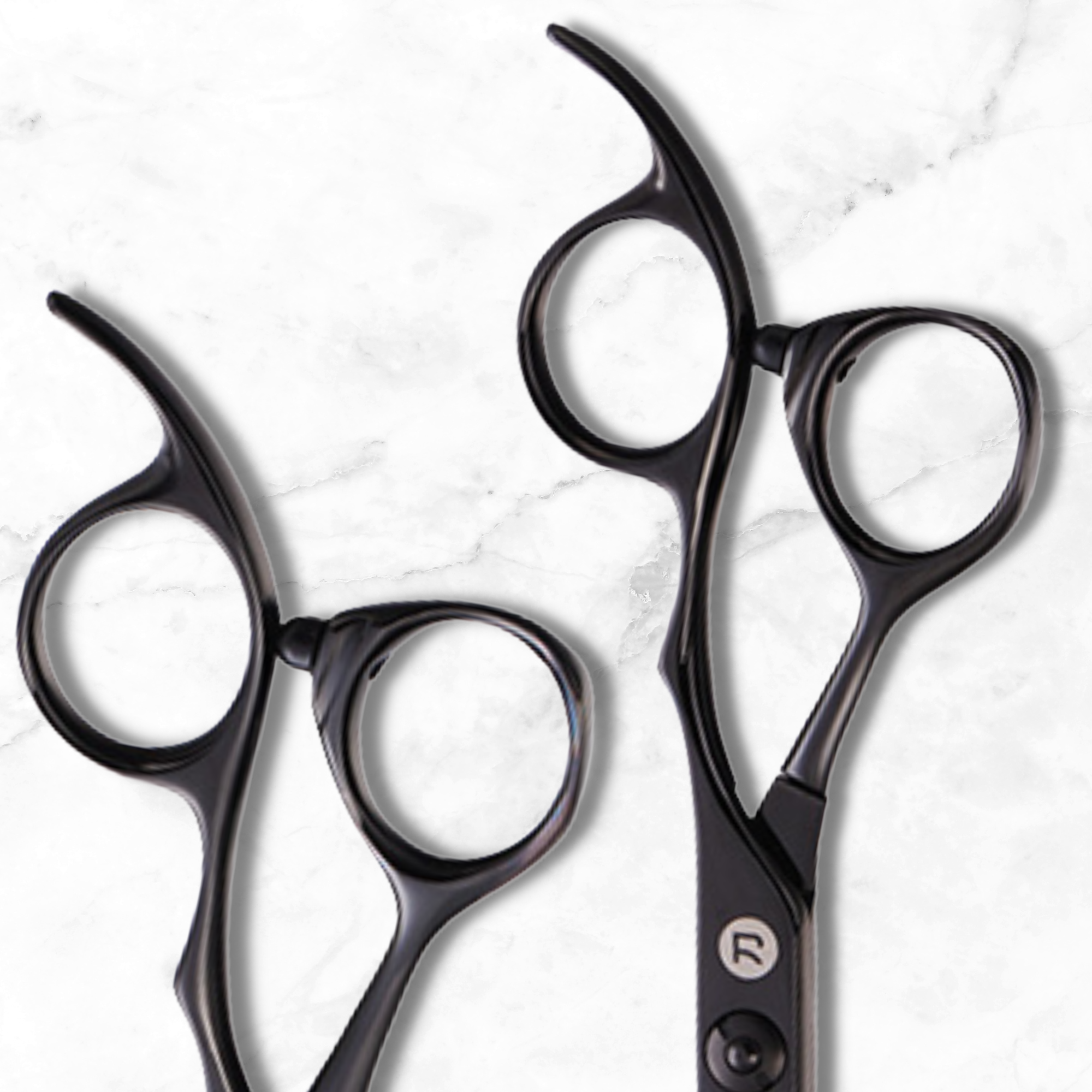
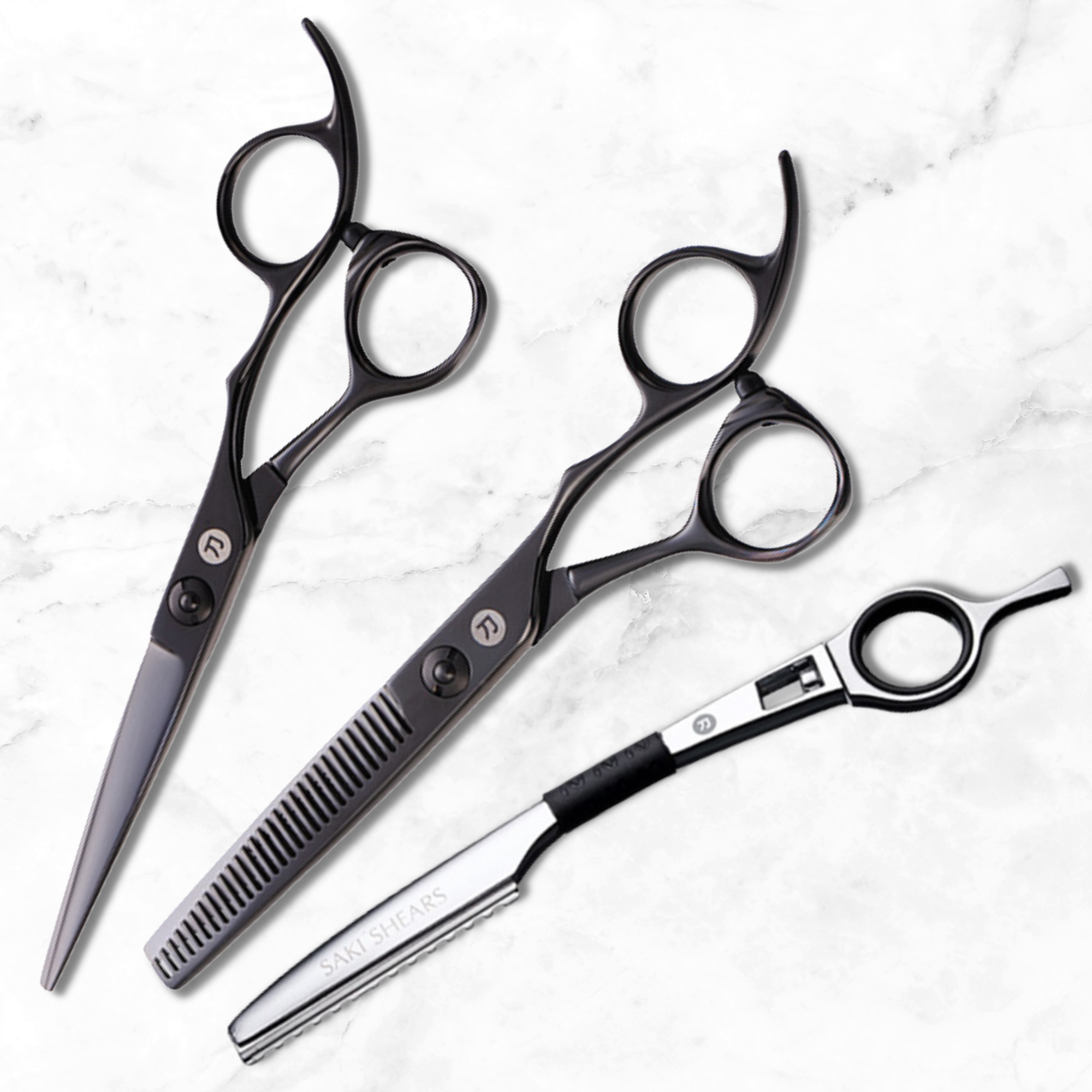
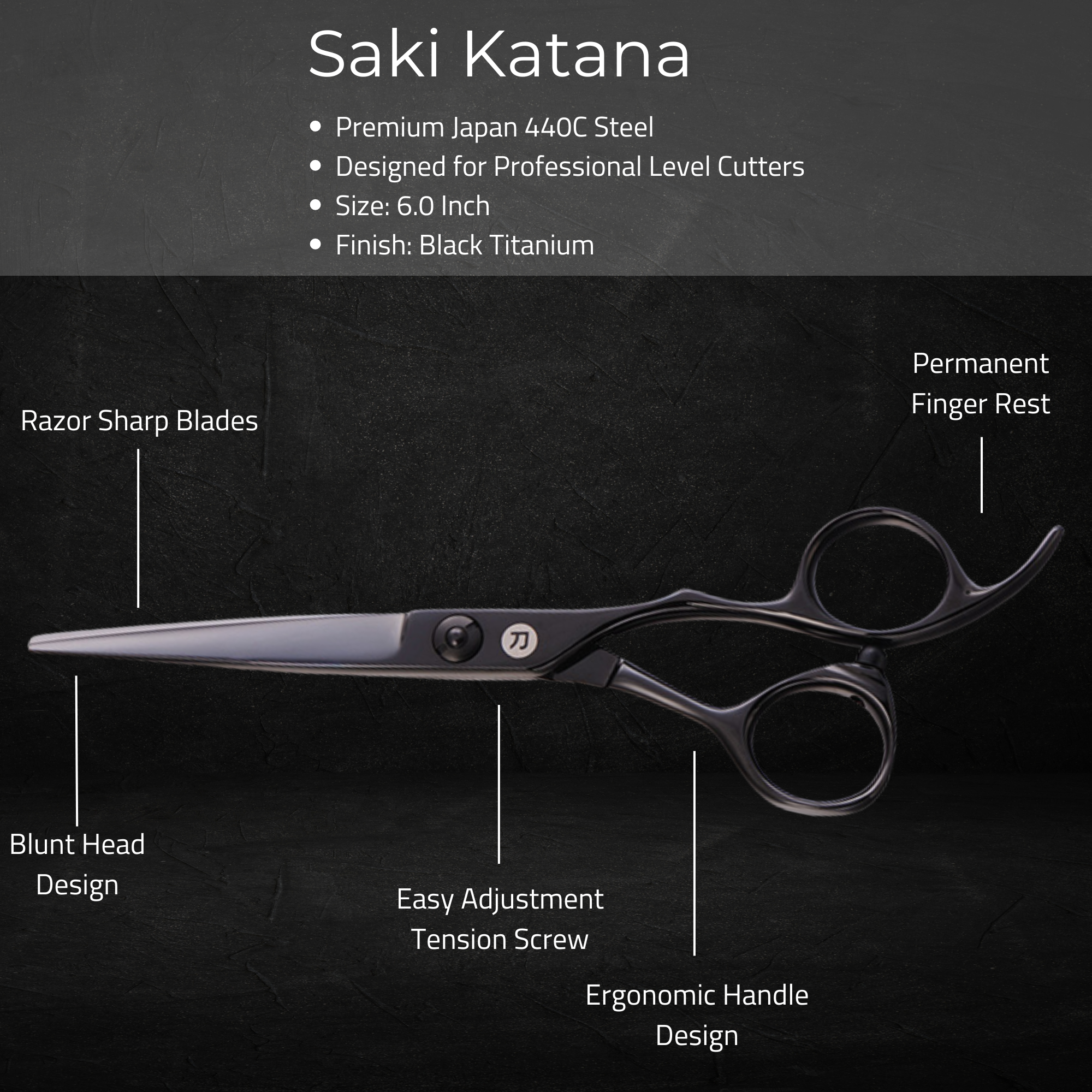
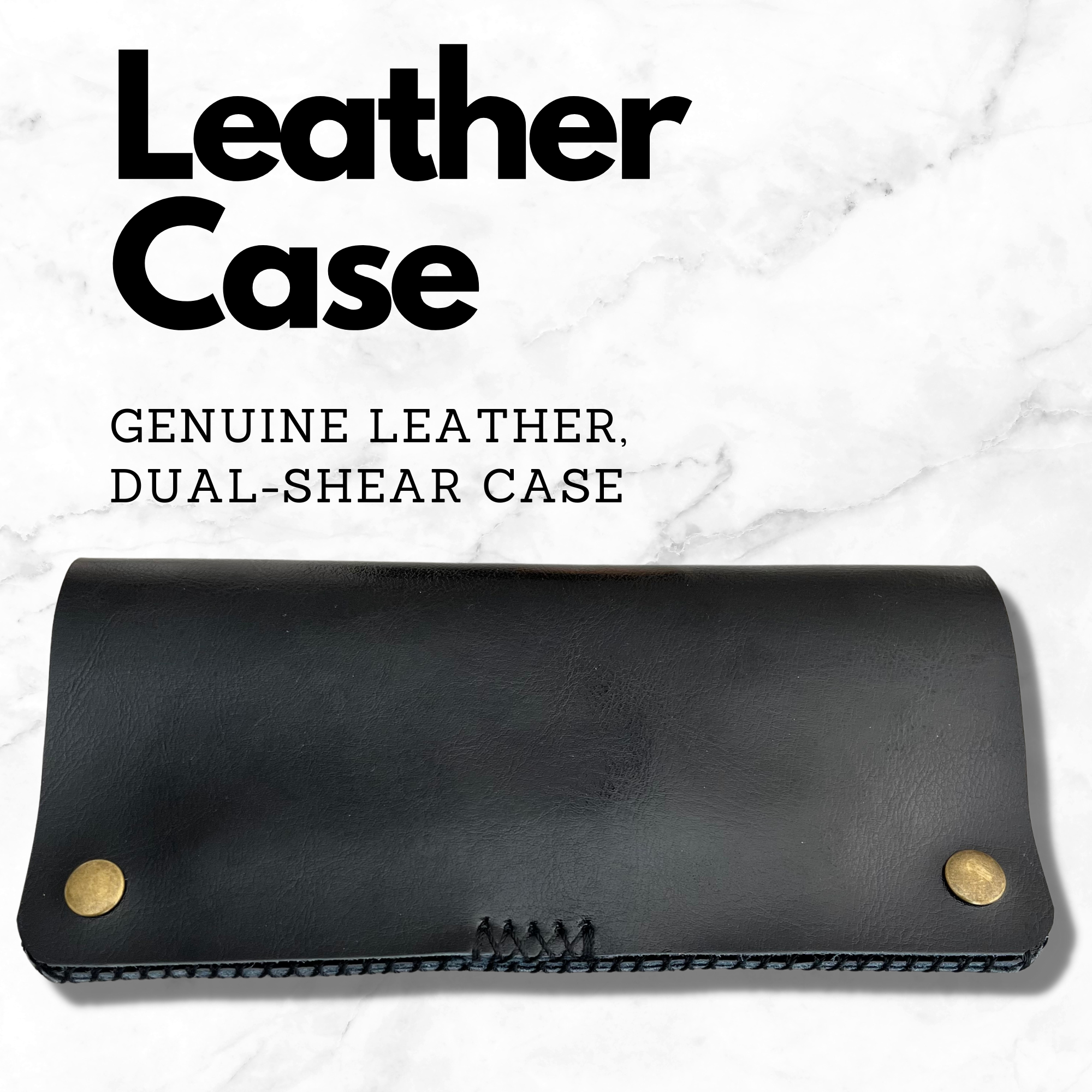
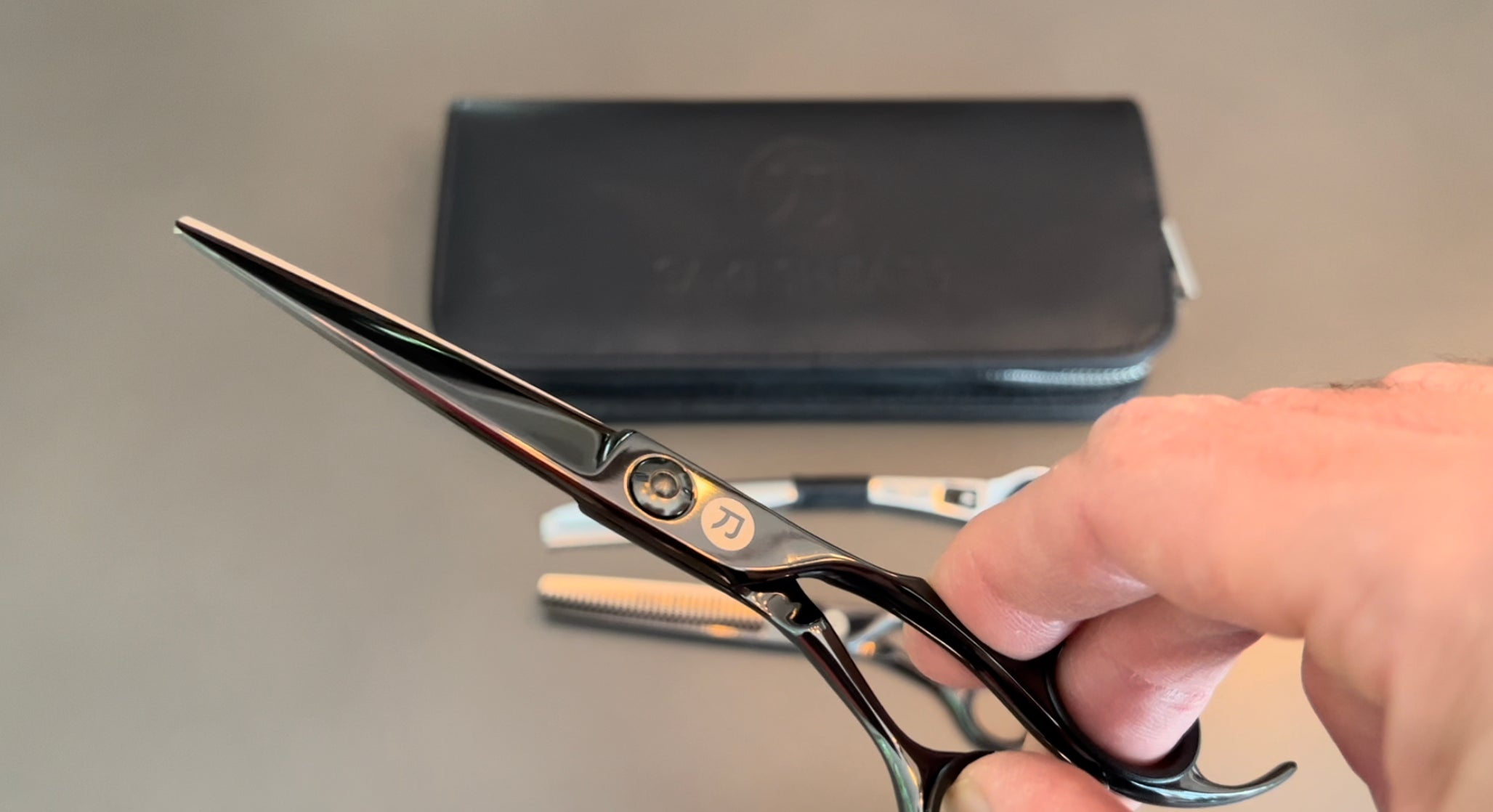
Saki Katana Hair Cutting set is the perfect pair! Handmade and constructed using Japanese stainless steel and a thick coating of black titanium, the Saki Katana Hair Scissor and Thinning Shear provide the ultimate durability for a long-lasting pair of hair shears you can count on. The Saki Katana set includes our premium hair cutting shears, hair thinning shears, razor and leather carrying case.
Options:
6" set includes the Katana 6" cutting shears, 6" thinning shears, swivel razor and leather case.
7" set includes the Katana 7" cutting shears, 6" thinning shears, swivel razor and a leather case.
Saki Katana Warranty: Covered by Saki Shears Lifetime Warranty
Saki Katana Cutting Shears
Saki Katana Hair Shears feature a convex edge and triple-honed, stainless steel blade for precise and smooth cutting while the offset, extra-long crane handle fights fatigue and provides the ultimate in comfort. Ideal for blunt, wet, and dry cutting.Features:
- Handmade for Precision
- Material: Japanese Stainless Steel
- Blade: Japanese style convex blade with hardness 60-61 HRC
- Ring Size: Adjustable
- Two-Piece Welded
- Black Coating: Titanium Coating
- Coating Thickness: 1.5 um
- Size: 6 inch
Saki Katana Thinning Shears
Saki Katana Thinning Shear is perfect for thinning, blending and/or adding texture to any hairstyle with 30 teeth and thick, short sword back blades. Offset, extra-long crane handle, and adjustable ring size offers the utmost comfort and support while styling.
Features:
- Handmade for Precision
- Material: Japanese Stainless Steel
- Blade: Japanese style convex blade with hardness 60-61 HRC
- Ring Size: Adjustable
- Two-Piece Welded
- Black Coating: Titanium Coating
- Coating Thickness: 1.5 um
- Size: 6 inch/30 Teeth
Your Saki Katana Set Includes:
- 1 Handmade Saki Katana Hair Shears
- 1 Handmade Saki Katana Thinning Shears
- 1 Handmade Swivel Razor
- 1 Case
- Lifetime Warranty
Saki Shears Katana line of hair shears are perfect for master barbers, advanced hair stylists and professional hairdressers.

